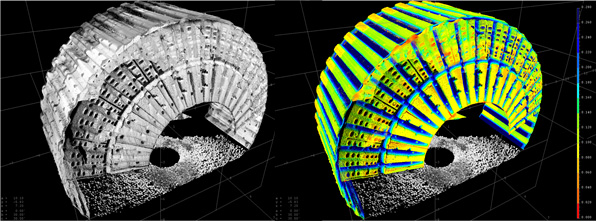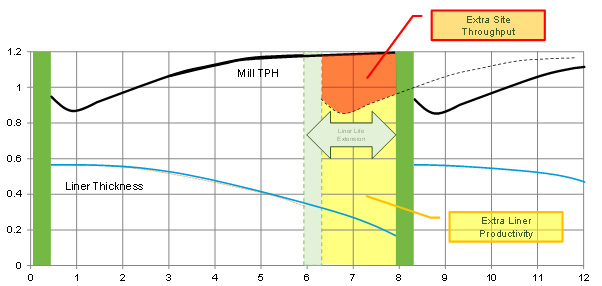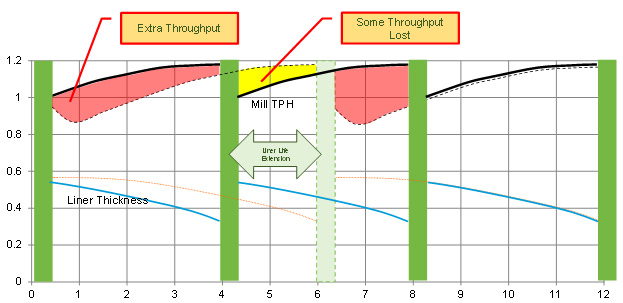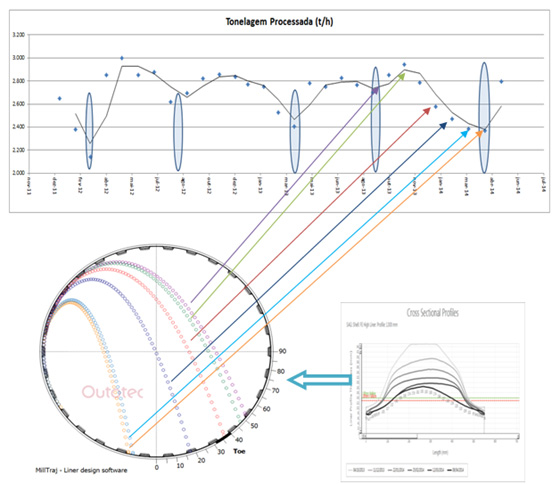Safety continues to be a major issue in mining and minerals processing. Grinding mills and the mill relining process in particular represent several hazards including the presence of MV power, pinch points, confined spaces, elevated loads and manual handling. Laser scanning condition monitoring allows 100% inspection of exposed liners in a fraction of the time required for conventional inspections and can eliminate the need for confined space entry.
The data acquired through 3D laser scanning can be processed in many ways. Basic outputs might be liner life prediction and lifter profile tracking. However this analysis can become very powerful when it is correlated with metallurgical performance of the mill or circuit in question.
Liner Management for Grinding Mill Performance
Grinding mill liners are the interface where energy is transferred to the grinding media and ore. Therefore an understanding of liner wear characteristics and profiles is crucial to the overall management of Grinding Mill performance, availability, reliability and plant profitability.
During the service life of a liner system, the metallurgical performance of the mill can vary as the liner profile and thickness changes due to wear. Typical behaviour is for throughput to increase over life, with peak performance coming just before a reline. However the opposite is also possible, with lifter wear adversely affecting throughput. Every mill and every plant is different, so while the path to optimisation usually includes maximising liner life and minimising reline, re-torque and other shutdowns, in some cases the optimum regime is to use thinner liners to optimise throughput and accept a shorter reline interval.




